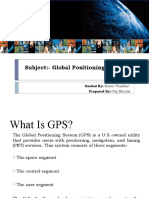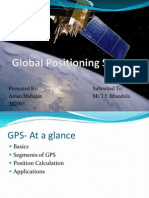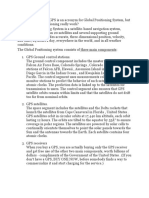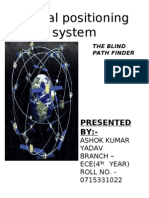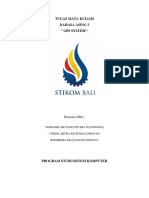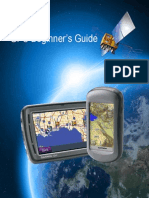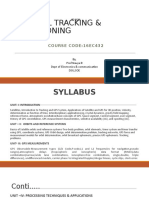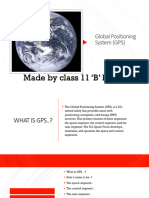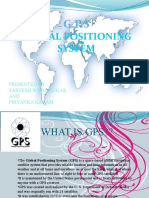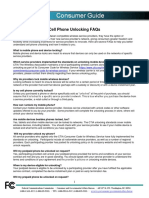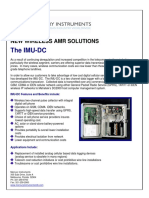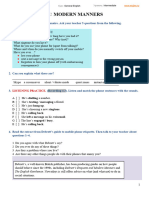0% found this document useful (0 votes)
22 views28 pagesGlobal Position System
The Global Positioning System (GPS) is a satellite-based navigation system that provides location, velocity, and time information globally, originally developed for military use but now available for civilian applications. GPS technology consists of three segments: space, control, and user, with at least 24 satellites orbiting the Earth to transmit signals to receivers. It has a wide range of applications across various fields including agriculture, aviation, marine navigation, and public safety, while also facing challenges related to signal accuracy and environmental factors.
Uploaded by
Praharsha UdayagiriCopyright
© © All Rights Reserved
We take content rights seriously. If you suspect this is your content, claim it here.
Available Formats
Download as DOC, PDF, TXT or read online on Scribd
0% found this document useful (0 votes)
22 views28 pagesGlobal Position System
The Global Positioning System (GPS) is a satellite-based navigation system that provides location, velocity, and time information globally, originally developed for military use but now available for civilian applications. GPS technology consists of three segments: space, control, and user, with at least 24 satellites orbiting the Earth to transmit signals to receivers. It has a wide range of applications across various fields including agriculture, aviation, marine navigation, and public safety, while also facing challenges related to signal accuracy and environmental factors.
Uploaded by
Praharsha UdayagiriCopyright
© © All Rights Reserved
We take content rights seriously. If you suspect this is your content, claim it here.
Available Formats
Download as DOC, PDF, TXT or read online on Scribd
/ 28
